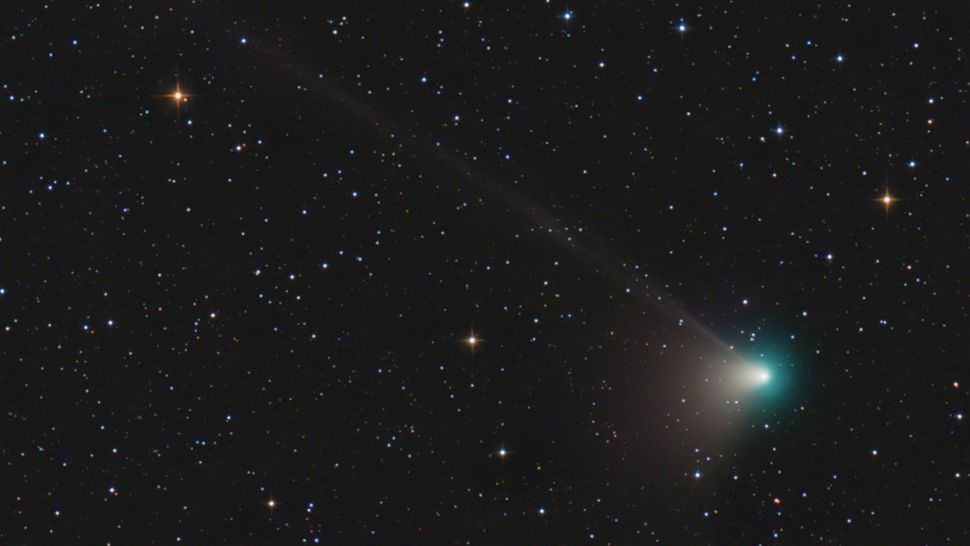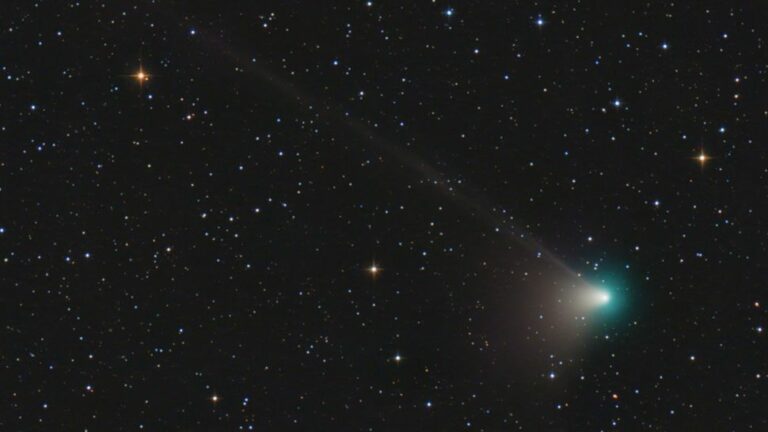On Thursday, a potential naked-eye comet will be closest to the sun (Jan. 12)
The comet C/2022 E3 (ZTF) will be at its closest to the sun since the last ice age before it swings past Earth in February.
On Thursday (Jan.12) a comet that hasn’t visited Earth or the inner solar system since the last ice age will reach its closest point to the sun, also known as its perihelion.

The comet, designated C/2022 E3 (ZTF), will come to within around 100 million miles (160 million kilometers) of the sun. Following the perihelion, the comet will then move towards Earth making its closest approach to our planet, its perigee, on Feb.2 when it will whip past us at a distance of 26 million miles (42 million kilometers).
Though it won’t be visible to the naked eye during its close approach to the sun, the comet should be observable with binoculars. If C/2022 E3 (ZTF) continues to brighten the way it currently is, it could eventually be possible to spot it in the night sky with the naked eye. Whether or not you’ll be able to see it on your own, The Virtual Telescope Project will be hosting a free livestream of the comet beginning at 11:00 p.m. EST on Jan. 12 (0400 GMT on Jan. 13). You can watch the live webcast courtesy of the project’s website or on its YouTube channel.
NASA’s Jet Propulsion Labs (NASA JPL)(opens in new tab) gives the period of this comet as 50,000 years. This means the last time the orbit of C/2022 E3 (ZTF) brought it so close to the Earth, our planet was in the midst of the last glacial period or “ice age” and early Homo sapiens and Neanderthals still shared the planet.
According to In the Sky from New York City C/2022 E3 (ZTF) at perihelion will be visible in the dawn sky, rising at 11:18 p.m. EST (0418 GMT) and reaching an altitude of 64° over the eastern horizon. The comet will fade from view as dawn breaks around 6:07 a.m. EST (1107 GMT).
C/2022 E3 (ZTF) will eventually reach its brightest on Feb. 2 when it will be at its closest to Earth, visible in the constellation Camelopardalis.
The comet was first identified in March 2022 by the wide-field survey camera at the Zwicky Transient Facility and was initially believed to be an asteroid. It was the rapid brightening of C/2022 E3 (ZTF) as it moved from the inner orbit of Jupiter that indicated it true cometary nature.
The brightening of comets can be difficult to predict, but even if C/2022 E3 (ZTF) doesn’t brighten enough to become visible with the naked eye, it will still be observable during January and early February with binoculars and small telescopes.
According to NASA observers in the Northern Hemisphere should be able to find C/2022 E3 (ZTF) in the morning sky, as it moves to the northwest throughout January. The comet will become visible for skywatchers in the Southern Hemisphere in early February 2023.
The new moon phase (when the moon is completely unilluminated) on Jan. 21 should provide the ideal dark skies needed to spot C/2022 E3 (ZTF), weather permitting.
If you want to take a look at C/2022 E3 ZTF and don’t have the right gear, be sure to peruse our guides for the best binoculars and the best telescopes to view the comet or anything else in the sky. For capturing the best comet images you can, we have recommendations for the best cameras for astrophotography and best lenses for astrophotography.
Source:SpaceCom
Do not forget to share your opinion with us to provide you with the best posts !




0 Comments